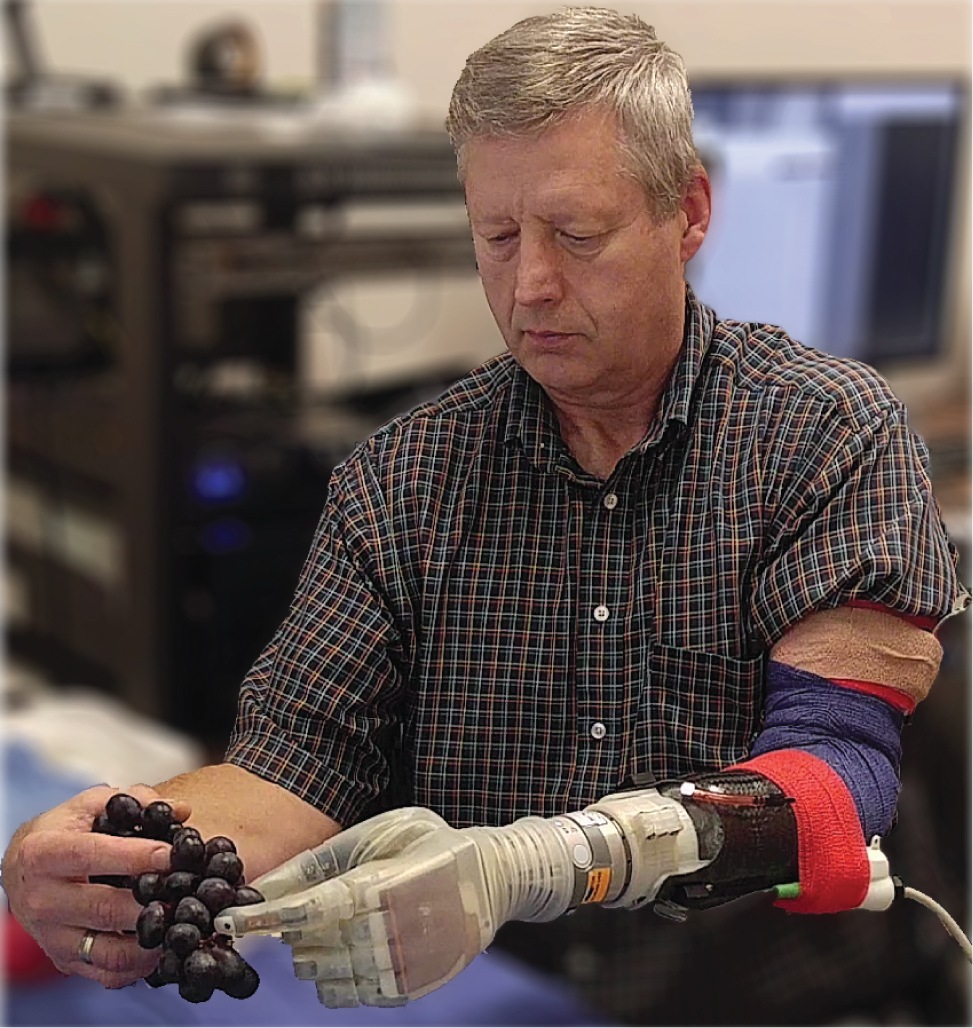
A biomedical engineering team from the University of Utah has developed a prosthetic arm that can be moved with one’s thoughts and provides the sensation of touch. This team, led by associate professor Gregory Clark, has created a way for this “LUKE Arm” to model the way a human hand feels objects by sending the proper signals to the brain. These researchers’ findings were recently published in Science Robotics, with co-authors including doctoral student Jacob George and former doctoral student David Kluger.
“We changed the way we are sending that information to the brain so that it matches the human body. And by matching the human body, we were able to see improved benefits,” said George. “We’re making more biologically realistic signals.”
What is the LUKE Arm
This unique prosthetic arm, named after Luke Skywalker’s robotic hand, has been in the works for about 15 years. It consists of metal components for motor activity and a silicon covering over the hand that mimics the skin. The LUKE Arm is powered with an external battery that was created by DEKA Research & Development Corp., a New Hampshire company founded by Segway founder Dean Kamen.
These engineers have been working to create a system that connects the arm to the user’s nerves. This ability comes from the University of Utah researcher Richard A. Normann’s creation, the Utah Slanted Electrode Array. This device consists of 100 microelectrodes and wires that are implanted into an amputee’s forearm nerves and connected to an external computer. The electrode array then interprets signals from the amputee’s existing nerves and translates them into signals that move the prosthetic arm.
The LUKE Arm is unique in that this relay of information works the other way as well, with sensory information from the prosthetic being transmitted to the brain. This allows the hand to obtain sensory information from the hand that it can use to moderate the amount of pressure it exerts.
Tactile features of an object are obtained through sensors in the hand of the device, which send impulses to the wearer’s existing nerves. Connecting these two points was just the beginning, however, with the researchers now having to recreate the complex manner in which these signals are sent.
A burst of signals is sent from the peripheral nerves to the brain upon touching something, and these impulses slowly tapering off. The Utah team noted that the modeling of this pattern was essential in their work. This was fine-tuned using data from neural impulses in a primate’s arm, yielding a model of how humans receive various signal patterns. This model served as the basis for the LUKE Arm’s tactile system.
“Just providing sensation is a big deal, but the way you send that information is also critically important, and if you make it more biologically realistic, the brain will understand it better and the performance of this sensation will also be better,” said Clark.
Going Forward with LUKE Arm
The team currently has a prototype of the device with touch sensation and is working to create a fully portable platform with no external computer needed. If the whole system becomes wireless, the wearer will have much more freedom in using the device in daily activities.
Clark also claims that the Electrode Array can send different tactile signals to the brain in addition to touch, including temperature and pain. He added that although their device was only used in those with limb loss below the elbow, it could apply to those with amputations above the elbow as well. Clark aspires to have three test subjects who can use the LUKE Arm in their own home within the next two years.
Other Groups Involved with the Work
Organizations involved in this work include the University of Utah’s Department of Neurosurgery, Department of Physical Medicine and Rehabilitation and Department of Orthopedics. Additional collaboration came from the University of Chicago’s Department of Organismal Biology and Anatomy, the Cleveland Clinic’s Department of Biomedical Engineering, and Utah neurotechnology companies Ripple Neuro LLC and Blackrock Microsystems. Funding was provided by the Defense Advanced Research Projects Agency and the National Science Foundation.
“This is an incredible interdisciplinary effort,” said Clark. “We could not have done this without the substantial efforts of everybody on that team.”
A team at the University of Utah Center of Neural Sciences developed the “LUKE Arm.” It’s inspired by Luke Skywalker’s robotic hand in Star Wars and helps amputees sense and feel objects. https://t.co/A1jDyhvxh0 pic.twitter.com/5ufw3DUA3N
— CNN Business (@CNNBusiness) July 26, 2019







 © 2025 Mashup Media, LLC, a Formedics Property. All Rights Reserved.
© 2025 Mashup Media, LLC, a Formedics Property. All Rights Reserved.